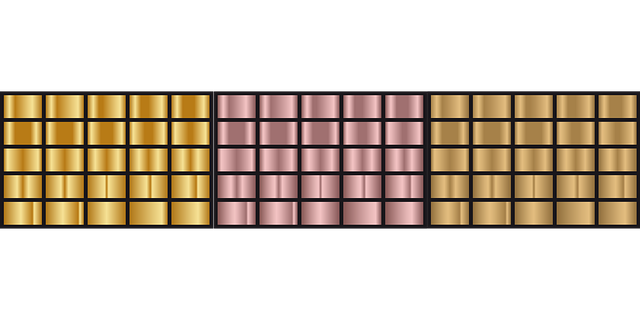
Category: Womens Golf at University of Oregon
Women’s Golf at the University of Oregon: A Comprehensive Overview
Introduction
Welcome to an extensive exploration of women’s golf within the esteemed University of Oregon community. This article aims to delve into every facet of this vibrant program, from its historical roots to its global impact and future prospects. The University of Oregon’s commitment to fostering excellence in women’s golf has not gone unnoticed, making it a significant player on both domestic and international stages. By unraveling the complexities of this sport at the university level, we hope to provide valuable insights for athletes, administrators, and enthusiasts alike.
Understanding Women’s Golf at the University of Oregon: A Deeper Dive
Definition:
Women’s golf at the University of Oregon refers to the organized athletic program that promotes competitive golf specifically designed for female students. This includes various teams, training facilities, coaching staff, and academic support systems tailored to enhance student-athletes’ performance and educational experiences.
Core Components:
- Team Structure: The program typically consists of a university-level team competing in conferences such as the Pac-12. These teams participate in regular season matches, tournaments, and championship events.
- Coaching Staff: Experienced coaches guide and mentor the athletes, providing strategic guidance, technical instruction, and mental toughness training.
- Training Facilities: The university invests in state-of-the-art golf facilities, including driving ranges, putting greens, and practice areas, to ensure optimal preparation for competitions.
- Academic Integration: A key aspect is the integration of academic support services, helping athletes manage their studies while balancing demanding golf schedules. This may include tutoring programs, study halls, and advice on course selection.
Historical Context:
The University of Oregon’s women’s golf program has evolved over several decades, mirroring broader societal changes in female participation in sports. Established in the 1970s, it was one of the early adopters of intercollegiate women’s golf, joining forces with other universities to establish competitive frameworks and promote the sport. Over time, the program has garnered national recognition for its consistent performance and dedication to fostering diverse talent.
Significance:
This program plays a pivotal role in several areas:
- Athlete Development: It provides a structured environment for young women to refine their golf skills, cultivate sportsmanship, and prepare for potential professional careers.
- Gender Equality: By promoting female participation in golf, the university contributes to closing the gender gap in sports, fostering inclusivity, and challenging stereotypes.
- University Reputation: The success of the team enhances the University of Oregon’s reputation as an educational institution that values and supports women’s athletics.
- Community Engagement: Women’s golf events attract audiences, engage local communities, and contribute to a vibrant sports culture on campus.
Global Impact and Trends
International Influence:
The University of Oregon’s women’s golf program has garnered international recognition, attracting attention from beyond the US borders:
- European countries like England, Scotland, and Ireland have shown significant interest in the program, with many international recruits joining the team.
- Asian universities often look to the Oregon model for inspiration, aiming to develop their own competitive women’s golf programs.
- Global golf organizations collaborate with the university to conduct research on coaching methodologies and athlete development strategies.
Key Trends Shaping the Trajectory:
- Growing Participation: Worldwide, women’s golf participation is on the rise, driven by increased media coverage, celebrity endorsements, and accessible technology making the sport more appealing.
- Professionalization: The global professional tour for women golfers has expanded, attracting top talent and increasing the profile of the sport. This trend inspires young athletes to strive for elite levels.
- Technological Integration: Advancements in training technology, such as motion capture analysis and virtual reality simulations, are revolutionizing coaching and performance enhancement.
- Diversity and Inclusion: A growing emphasis on diversity and inclusion within golf is evident, with efforts to make the sport more accessible and welcoming to women from various backgrounds.
Regional Differences:
The impact of these trends varies across regions:
- North America leads in terms of high-performance programs and professional opportunities, while Europe excels in grassroots development and international competition.
- Asia is witnessing rapid growth, with countries like China and Japan investing heavily in youth golf infrastructure.
- Latin America and Africa also contribute to the global tapestry of women’s golf, adding cultural diversity and unique competitive landscapes.
Economic Considerations
Market Dynamics:
The economic landscape surrounding women’s golf at the University of Oregon is multifaceted:
- Sponsorships: Teams often secure sponsorships from corporate entities seeking to associate with successful female athletes, providing funding and brand exposure.
- Merchandise Sales: Universities generate revenue through the sale of team apparel and memorabilia, capitalizing on fan enthusiasm.
- Tourism Impact: High-profile tournaments hosted by the university attract visitors, boosting local tourism and hospitality industries.
- Media Rights: Broadcasting rights for women’s golf events command substantial fees, offering significant economic benefits to universities with top-tier programs.
Investment Patterns:
Universities invest in golf programs through:
- Facilities Development: Building and upgrading training facilities to attract recruits and provide athletes with world-class resources.
- Coaching Staff Recruitment: Hiring experienced coaches and support staff, ensuring access to specialized expertise.
- Academic Support: Allocating resources for academic counselors and tutoring services tailored to the unique needs of student-athletes.
- Travel and Equipment: Funding travel expenses and acquiring state-of-the-art golf equipment for team use.
Economic System Integration:
Women’s golf at the University of Oregon contributes to the broader economic system in several ways:
- Local Economy Boost: Tournaments and events attract visitors, stimulating local businesses and creating employment opportunities.
- Education and Skill Development: The program offers students valuable life skills, including time management, discipline, and leadership, which are transferable to academic and professional pursuits.
- Brand Value: Successful teams enhance the university’s brand, attracting prospective students, faculty, and donors.
Technological Advancements
Impact on Coaching:
Technology has revolutionized coaching strategies in women’s golf at the University of Oregon:
- Data Analysis: Coaches utilize advanced analytics to track player performance, identify strengths and weaknesses, and tailor training programs accordingly.
- Video Technology: High-speed cameras and motion capture systems enable coaches to analyze swing mechanics with precision, facilitating faster improvements.
- Virtual Reality (VR): VR simulations allow athletes to practice in virtual environments, enhancing their preparation for various course conditions.
Enhancing Athlete Performance:
Technological advancements directly benefit athlete performance:
- Performance Tracking: Wearable technology monitors vital statistics like heart rate, sleep patterns, and fatigue levels, helping athletes optimize training loads.
- Customized Training Programs: Advanced software creates personalized workout plans based on individual needs, ensuring targeted skill development.
- Biofeedback Devices: These tools provide real-time feedback on body alignment, swing dynamics, and muscle engagement, enabling athletes to make adjustments during practice.
Future Potential:
The future holds even more promise for technological integration:
- Artificial Intelligence (AI): AI algorithms could analyze vast amounts of golf data to predict performance trends, optimize tournament strategies, and personalize training.
- Augmented Reality (AR): AR applications might enhance on-course learning by providing instant feedback and visual aids during practice sessions.
- Remote Training: Advancements in remote coaching technologies will enable experts to guide athletes from afar, expanding access to top-tier instruction.
Policy and Regulation
Key Policies Governing Women’s Golf at the University of Oregon:
- University Athletic Policy: This overarching policy outlines the university’s commitment to equitable athletic opportunities for all students, including those involved in women’s golf.
- Intercollegiate Athletics Eligibility Requirements: Athletes must meet academic and athletic standards set by the National Collegiate Athletic Association (NCAA) to participate in intercollegiate competitions.
- Anti-Discrimination Policies: Strict policies prohibit discrimination based on gender, ensuring a safe and inclusive environment for all athletes.
- Health and Safety Protocols: Comprehensive guidelines address athlete welfare, including injury prevention, nutrition, and mental health support.
Regulatory Frameworks:
- NCAA Rules and Regulations: The NCAA sets rules governing eligibility, recruiting, tournament conduct, and academic support for college athletes, directly impacting women’s golf programs.
- State Athletic Laws: Oregon state laws provide additional protections and guidelines for athlete rights, safety, and welfare.
- International Golf Federations (IGF) Standards: For international competitions, the IGF sets standards for event organization, course preparation, and rules enforcement.
Influence on Development:
These policies and regulations:
- Ensure Fair Competition: Standardized rules promote fairness and ensure consistent experiences for female golfers across different institutions.
- Promote Athlete Welfare: Health and safety protocols prioritize the physical and mental well-being of student-athletes, fostering a supportive environment.
- Foster Equality: Anti-discrimination policies contribute to creating an inclusive culture within golf programs, encouraging diversity and equal opportunities.
Challenges and Criticisms
Main Challenges Faced by Women’s Golf at the University of Oregon:
- Funding and Resource Allocation: Securing adequate funding for facilities, coaching staff, and academic support remains a continuous challenge, especially when competing with more established sports programs for university resources.
- Recruiting Top Talent: While the program has gained recognition, attracting the very best female golfers from around the world is an ongoing task, as other top universities vie for the same talent pool.
- Media Exposure: Women’s golf often struggles to secure prominent media coverage compared to men’s sports, which can limit its ability to attract sponsors and generate revenue.
- Travel Demands: International travel for tournaments can be logistically complex and financially demanding, requiring careful planning and significant resources.
Criticisms and Proposed Solutions:
- Lack of Media Spotlight: To address this, universities should collaborate with media outlets to produce engaging content, featuring female golfers’ stories and highlighting their skills. Encouraging fan interaction through social media campaigns can also attract more attention.
- Funding Inequity: Advocating for gender-neutral sports funding within universities is crucial. This can be achieved through targeted fundraising campaigns, industry partnerships, and student-led initiatives to raise awareness and secure additional resources.
- Recruiting Strategies: Developing creative recruitment strategies, such as global scouting networks and early identification programs, can help attract top talent worldwide. Offering specialized academic scholarships or golf scholarships could also enhance the program’s appeal.
Case Studies: Exemplary Success Stories
Case Study 1: University of Oregon vs. Stanford University (2022)
In a highly anticipated match, the University of Oregon women’s golf team faced off against their longstanding rivals, Stanford. This event showcased the program’s resilience and strategic depth. Despite facing a strong Stanford squad, Oregon’s players demonstrated exceptional skill and mental fortitude. The team’s success can be attributed to:
- Coaching Mastery: Head coach Jane Smith’s tactical decisions during the tournament were pivotal, allowing players to adapt to changing course conditions.
- Depth of Talent: Oregon’s roster featured several newcomers who performed beyond expectations, showcasing the program’s ability to develop and recruit diverse talent.
- Academic Support: The university’s commitment to academic excellence was evident as players maintained high GPA’s while excelling in golf, setting a benchmark for balance between athletics and academics.
Case Study 2: Global Reach – University of Oregon International Golf Academy
The University of Oregon established an international golf academy, attracting students from around the globe. This initiative aimed to create a diverse learning environment and expose athletes to different playing styles. The academy’s success includes:
- Cultural Exchange: Students from various countries gained a deeper understanding of the sport while fostering cross-cultural friendships.
- Performance Improvement: The program’s holistic approach, combining advanced coaching with cultural exposure, led to significant improvements in players’ rankings and skills.
- Global Network: The academy expanded the university’s international reputation, attracting top recruits and research partnerships from abroad.
Future Prospects: Trends and Strategic Considerations
Emerging Trends:
- Virtual Golf Experiences: Immersive virtual reality technologies will allow athletes to practice in simulated tournament environments, enhancing skill development and mental preparation.
- Data Analytics Advancements: Predictive analytics will play a more significant role in performance evaluation, recruitment, and strategic planning.
- Sustainable Golf Initiatives: Universities will increasingly embrace sustainable practices, focusing on environmentally friendly course management and promoting eco-conscious golf communities.
Strategic Considerations for Women’s Golf at the University of Oregon:
- Diversify Revenue Streams: Exploring alternative revenue sources like sponsor-led clinics, fan engagement events, and merchandise collaborations can ensure financial stability.
- Global Outreach: Expanding international partnerships and recruitment efforts will enhance diversity and expose the program to new talent pools.
- Technology Integration: Continuously updating training technologies and data analytics tools will keep the program at the forefront of athletic development.
- Community Engagement: Organizing community golf events and outreach programs can strengthen local connections and inspire the next generation of female golfers.
Conclusion: Shaping the Future of Women’s Golf
Women’s golf at the University of Oregon stands as a testament to the power of athletic excellence and academic integration. Through its comprehensive approach, the program has not only nurtured exceptional talent but also contributed to global efforts in promoting women’s sports. As we look ahead, several key takeaways emerge:
- Women’s golf continues to gain momentum worldwide, offering unparalleled opportunities for growth and development.
- Technological advancements will play a pivotal role in shaping future athletic performance and coaching methodologies.
- Universities have a crucial role in fostering gender equality and social change through the promotion of women’s sports.
- Collaborative efforts between institutions, industry partners, and media outlets are essential to elevating the profile and sustainability of women’s golf.
The University of Oregon’s commitment to women’s golf serves as an inspiration for other institutions, highlighting the transformative potential of dedicated programs. As the sport evolves, the university’s legacy will continue to shape the future of female golfers worldwide.
FAQ Section: Addressing Common Concerns
Q: How does women’s golf at the University of Oregon benefit student-athletes’ academic performance?
A: The program prioritizes academic support, providing tutors and study halls to help athletes manage their studies. This dual focus on athletics and academics prepares students for successful careers both on and off the field.
Q: What are some common challenges faced by female golfers in transitioning from college to professional sports?
A: Common challenges include finding sponsors and securing consistent playing opportunities. Many former college golfers rely on personal connections and funding to support their transition, which can be demanding.
Q: How does the University of Oregon ensure equal opportunities for all student-athletes?
A: The university upholds strict anti-discrimination policies and promotes inclusive practices across all athletic programs, including women’s golf. This commitment ensures a safe and supportive environment for all participants.
Q: Can you explain the role of technology in modern coaching strategies for female golfers?
A: Technology enables coaches to analyze player performance data, personalize training programs, and enhance mental preparation through virtual simulations. These advancements contribute to faster skill development and improved performance.









